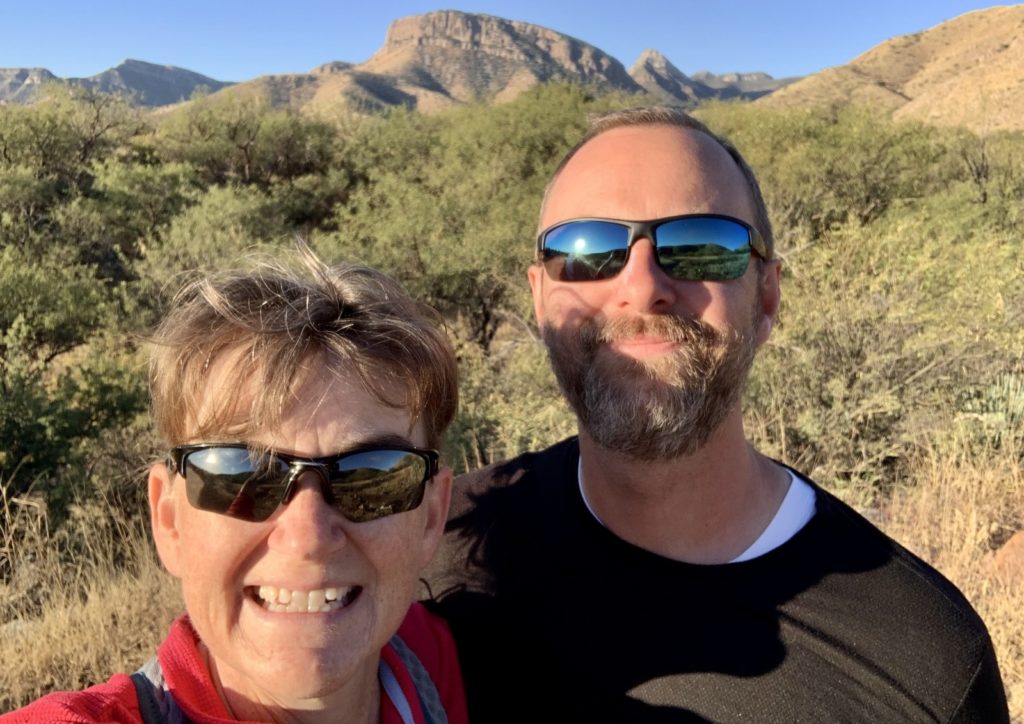
From Quartzsite, we continued our travels across Arizona to our first big destination of the trip, Kartchner Caverns State Park. Kartchner is a worthy destination all on its own with its exceptional limestone caves. It can also serve as a great basecamp for a variety of sites in SE Arizona. With a long list of places I wanted to visit, I booked us into the park’s campground for twelve nights the first half of December.
From Undiscovered Caves to State Park
In November 1974, Gary Tenen and Randy Tufts were exploring the limestone hills of the Whetstone Mountains near Benson, Arizona. They were looking for undiscovered caves and boy did they hit the jackpot. In the bottom of a sinkhole they found a narrow crack leading into the hillside. Warm, moist air flowed out, signaling the existence of a cave. After several hours of crawling, they entered a pristine cavern. The two vowed to conserve their find for generations to come. Through the cooperative efforts of these discoverers, landowners James and Lois Kartchner, and Arizona State Parks, Kartchner Caverns State Park was born. The primary goal was to develop the park in order to protect it. Arizona State Parks was also committed to ensuring that the cave would be accessible to everyone, including visitors with disabilities. The park opened in November 1999 in as close to pristine condition as possible and wheelchair accessible. The full history of the park is fascinating and a fun read. I encourage you to read a more detailed account here.
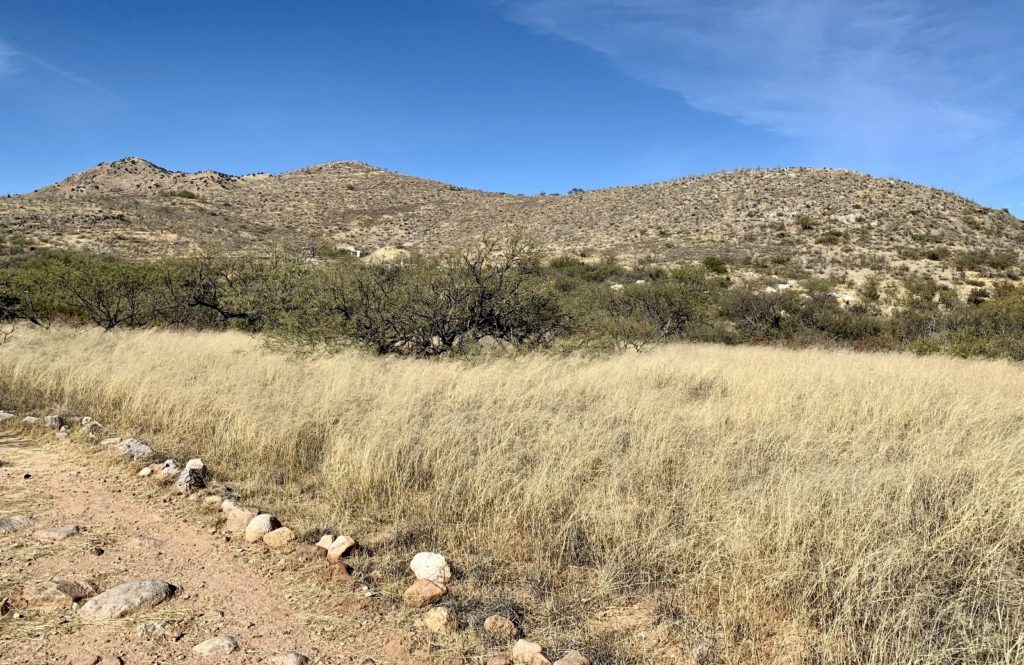
The formations that decorate caves are called “speleothems.” Usually formations are composed of layers of calcite called travertine deposited by water. The form a speleothem takes is determined by whether the water drips, flows, seeps, condenses, or pools. Many of the formations have been continuously growing for tens of thousands of years. For more on the science of cave formation, read here. We were impressed with the diversity of formation types at Kartchner—certainly it is one of the best collections we’ve seen.
Kartchner isn’t just significant for its cave formations. While exploring the cave, paleontologists uncovered the skeletons of an 86,000-year-old Shasta ground sloth, a 34,000-year-old horse, and an 11,000-year-old bear, as well as terrestrial snails, a clam, a toad, lizards, rabbits, snakes, a coyote, a ringtail, and many species of rodents. This blew our minds!

The cave is also significant as a nursery roost for over 1,000 female cave bats. The pregnant females return to Kartchner Caverns around the end of April, where they give birth to a single pup in late June/early July. The babies remain in the roost each evening while their mothers forage for insects outside the cave. Over their 5-6 month residence, the colony consumes about half a ton of insects, consisting of moths, flying ants, beetles, mosquitoes, and termites. Mothers and their offspring leave mid-September to begin their migration for their winter hibernation roost.



Park Logistics

Kartchner Caverns State Park is located 53 miles southeast of downtown Tucson off AZ-90. It is open every day of the year except Christmas. Facilities include the Discovery Center, museum, gift shop, amphitheater, cafe, picnic area, hiking trails, campground, and cabins. Entrance fees are $7.00 per vehicle and $3.00 per bicycle (fee waived for those with cave tour and/or campsite reservations). I highly recommend making advanced reservations for cave tours and camping. Tours frequently sell out days in advance and the campground is quite popular in the winter. I made our campground reservations 5 months in advance and only had a few open sites to choose from. Click here for park brochure and map.
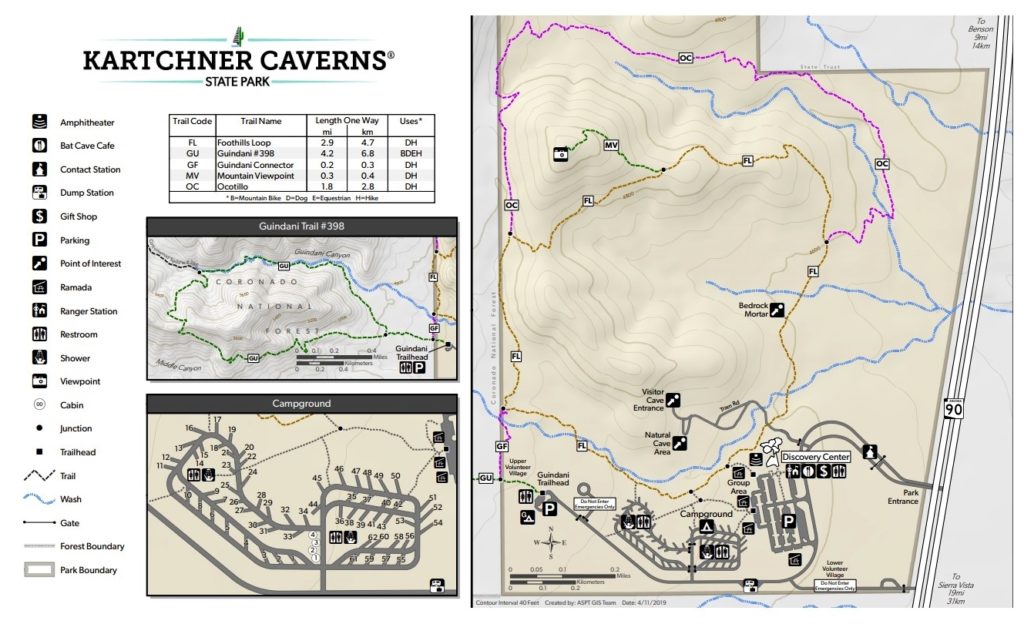
All cave tours at Kartchner are led by trained guides, no self-guided tours are available. The two main cave tours are the Rotunda/Throne Tour and the Big Room Tour. Prices for each are $23 for adults, $13 for youth (ages 7-13), and $5 for children under 7. The tours are well worth the cost. Note that the Big Room Tour is not available from April 15 – October 15 due to the roosting bats. Also, children under 7 are not allowed on the Big Room Tour. Specialty tours are also available on a limited schedule. Click here for more detailed cave tour information and to make reservations.



We went on both the Rotunda/Throne and Big Room tours. Both were truly exceptional and some of the most memorable moments of our winter 2021-2022 travels. The tour guides are very knowledgeable and clearly love what they do. We cannot say enough positive about how well done everything is at Kartchner. We did the Big Room Tour on the first day. It was 0.5 mile long and lasted 1:45 with a full hour spent underground. The tour focused on the discovery and development of the cave, living and ancient cave fauna, and viewing of the spectacular formations. We were so impressed with the tour that we booked the Rotunda/Throne Tour for the next morning. This tour was 0.5 mile long and lasted 1:30 with 50 minutes underground. This tour focused on how the cave and formations were created and featured “Kubla Khan,” the largest column formation in Arizona. I’d be hard pressed to pick a favorite of the two tours. I highly recommend doing both if you can. Photography is not allowed on the tours and I don’t believe any photo could do the cave justice. But Arizona Highways TV has an excellent 4 minute video on YouTube that gives an idea of the beauty inside the cave.









Park Campground
The campground loop at Kartchner offers great views of the Whetstone Mountains from its 60 campsites. Each campsite has a table and water/electric hookups. There are three handicapped designated sites, 12 pull-through sites and 43 back-in sites of varying sizes. Handicapped designated sites have paved access to the site and adjacent restroom, a paved pad, and wheelchair accessible table. There are also four cabins available for rent. Campsites and cabins are located near trailheads, not far from the cave and discovery center, and within a short walk to restrooms and showers. A nice dump station is available near the campground entrance. Campsites are $30.00 and cabins $59.00 per night.
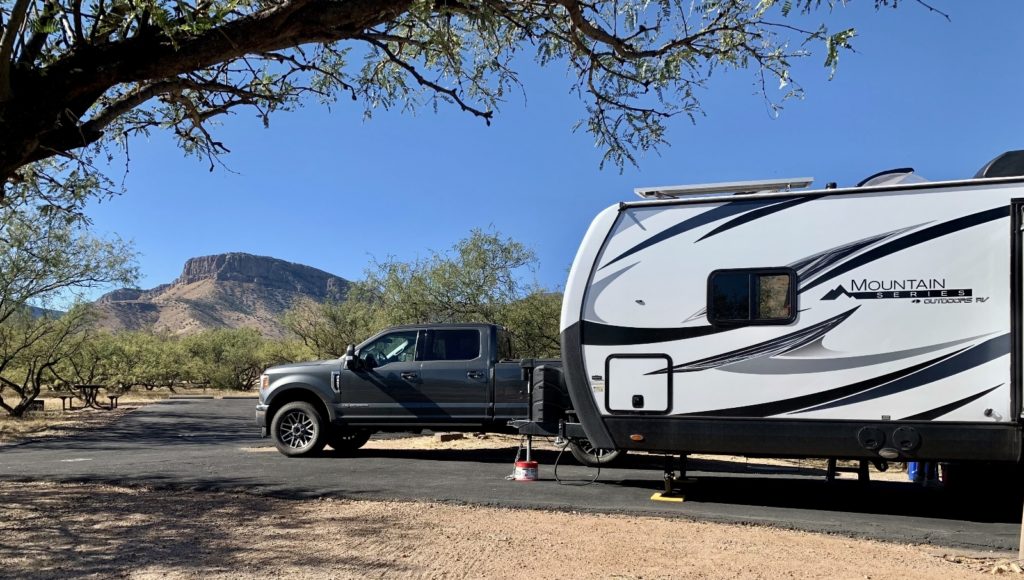
We stayed in site #19 for 12 nights. At only 33′ long and single width, it was a tight fit for us. It wasn’t ideal, but it was one of the only sites available for 12 nights when I made reservations back in July. Fortunately, we were able to make it work and we really enjoyed our stay there.
The campground sits at an elevation of 4,700′. We had superb December weather during our stay with sun every day, an average daytime high of 68, and average nighttime low of 44 degrees. In addition to the cave tours, we enjoyed some hiking in the park. We combined the Ocotillo and Foothills trails for a nice 3.5 mile loop. We intended to hike the highly recommended Guindani Trail that starts near the campground and leads up into neighboring Coronado National Forest, but we ran out of time. No worries—we will definitely be returning to Kartchner in the future and we’ll visit Guindani then.
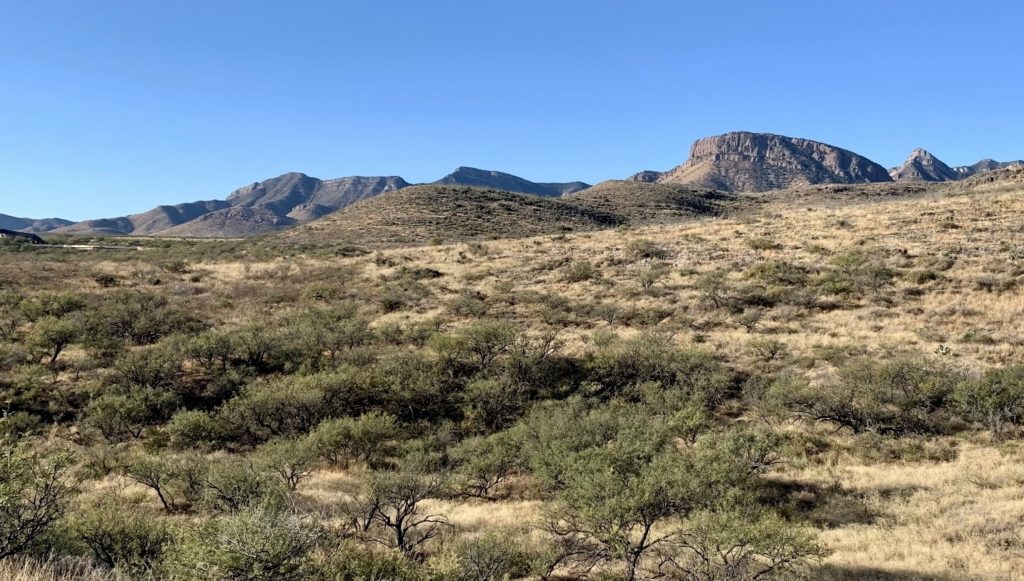
Kartchner Caverns as a Basecamp
Cave tours and hiking kept us busy for a few days during our stay at Kartchner Caverns State Park, but we spent the bulk of our time using the park as a basecamp to visit the surrounding area. SE Arizona is packed with historical and scenic sites. Most of our adventures will be covered in upcoming blog posts (see Related Posts below), but let me tell you quick about one nearby site.
Not far from Kartchner, along the banks of the San Pedro River, sits the ghost town of Fairbank, Arizona. Its life began with the construction of a railroad in 1881 and it soon became an important depot as well as the closest railroad stop to Tombstone, one of the most notorious of the Old West towns. Fairbank was built on an old Mexican land grant which was bought by the Boquillas Land and Cattle Company in 1901. The company evicted all land owners, but continued to lease the mercantile building and a few residences well into the 1970’s. The Bureau of Land Management acquired the land in 1986 as part of the San Pedro Riparian National Conservation Area. Today, several original buildings are still standing and open to the public. We weren’t able to go into any of the buildings during our visit due to COVID restrictions; however, we did hike a nice 4.5 loop along the San Pedro River (which would be gorgeous in late November when the cottonwoods sport their fall colors) and past the foundations of the Grand Central Mill and remains of the humble town cemetery. For more information and directions, click here.




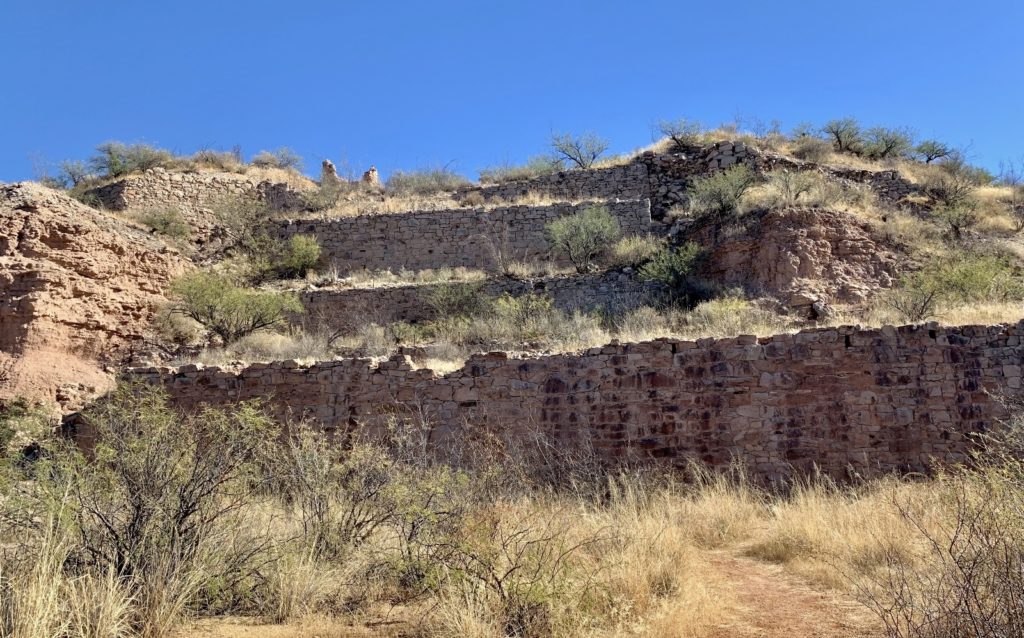
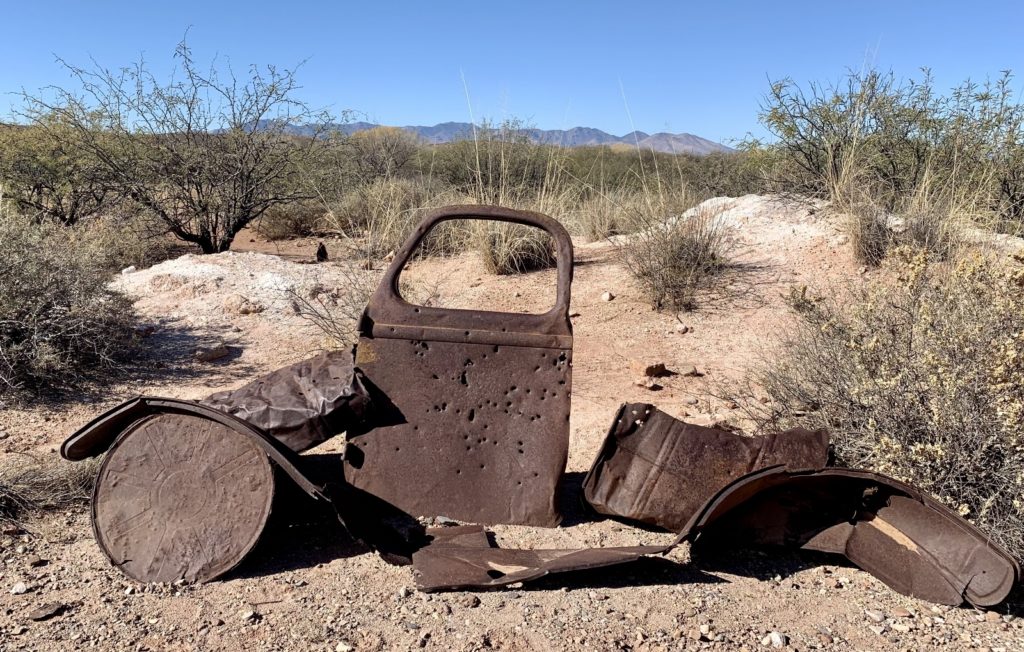



Related Posts
- Kayaking Patagonia Lake State Park
- Hike Through History at Fort Bowie National Historic Site
- Rock the Rhyolite at Chiricahua National Monument
- Climb & Explore at Coronado National Memorial
- Exploring Arizona’s Dragoon Mountains
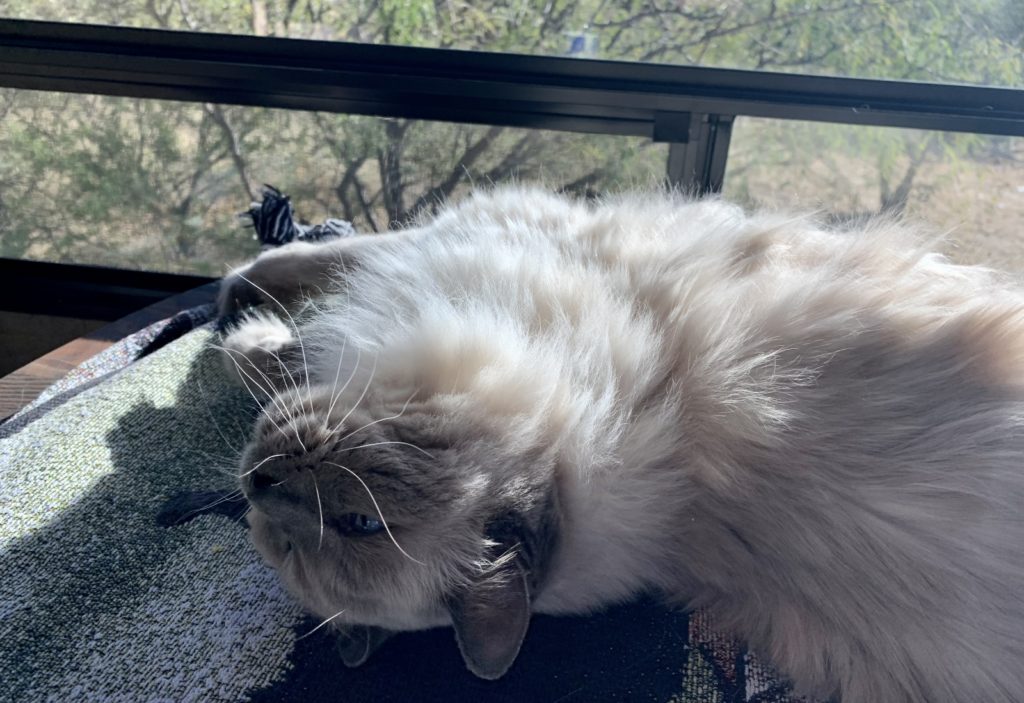
The Adventure Continues
Be sure to join us for our next post as we kayak Patagonia Lake State Park in southern Arizona. And don’t forget to check out our Amazon RV and Adventure Gear recommendations. We only post products that we use and that meet the Evans Outdoor Adventures seal of approval. By accessing Amazon through our links and making any purchase, you get Amazon’s every day low pricing and they share a little with us. This helps us maintain this website and is much appreciated!